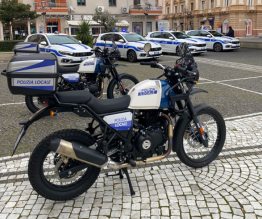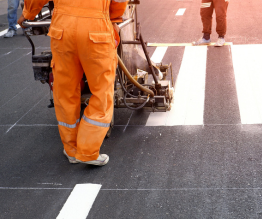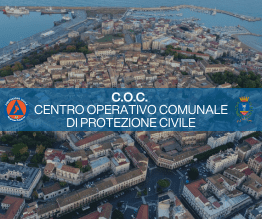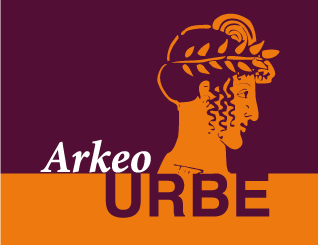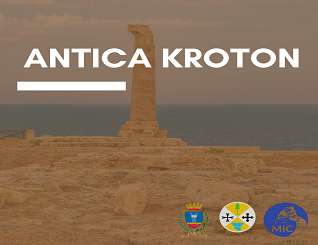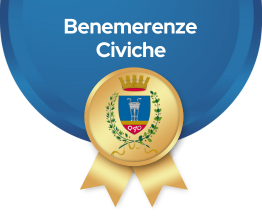Territory Towers and Castles
The Calabrian coast between Punta Alice to Crocchio river, was for manycenturies the destination of pirate invasions, because equipped with goodlanding points, which allowed the supply of food and water. For this reason, in the coastal defenseplan prepared by Fabrizio Pignatelli during the XVI century, in this stretch ofcoast, were provided a series of towers, visible between them and that theycould report immediately any enemy attacks on the citadels major. The distance between a tower and the other was about 12 kilometers. Typologically are distinguished in Norman (truncated cone), Angevin (a circular base with acurb), slow vicereign (square base), slow vicereign late.
These towers, along with the feudal castles, located mostly within (Santa Severina, Caccuri, Apriglianello, Fasana,Stroud, Melissa, Ciro, Apriglianello) and the military fortresses, are the mainfeatures of the coast of the territory of Croton.

- Detail of Ciro Marina-Crotone map
Old Tower of Cape Alice (Cirò Marina)
It has a quadrangular base, and is set in a beautiful landscape. In 1598 it was attacked and occupied by Pasha Cicalà. The tower has the lower partshows no signs of machicolations, it had an outside staircase, while today itis dilapidated.
Prince's Clastle (Cirò Marina)
In a great location, a vast plain, the castle dominates the link roadbetween the two upstream routes to reach Cirò and the coastal road that runslower. The complex is very important; the large plant is a square base withfour towers protruding edges. The residential characteristics are evident inthis castle. The building of sixteenth-century, quadrangular, with cornertowers, slightly to the shoe.
New Tower of Capo Alice (Cirò Marina)
Located in the beautiful nature of the place, at the mouth of Lipudariver, is a quadrangular viceregal tower, of which there are only ruins.
Torre Melissa (Melissa)
Abnormal imposing tower with a circular base, intended for coastaldefense but with characteristics of castle-residence. It has been reportedsince 1598 when Giovan Battista Campitelli, Count of Melissa will brave theTurcheschi of Bascià Cicala. In the course of the XVIII century it was owned bythe Prince of Stroud who hosted the Abbot of Saint-Non, on his journey toSouthern Italy.
Borgatorio Tower (Strongoli)
Beautiful square tower attacked by building speculation is at least 6 kmbefore the Neto river. It was also called Limara or Virga d'Oro. In good stateof preservation, has a system similar to the previous one, but with a showyelevation.
Castellataresidence of Fasana (Strongoli)
Complex quadrangular castle with four corner towers on the corners andsloping base. Beautiful seventeenth-century building was once home to the localnoble families. While the interior is nearly intact, the exterior has astaircase built evidently at a later period, and red brick wall hangings, whichtogether with false battlements dovetail, giving the building an air of Disney. Located in a beautiful environment, at the mouth of the river Neto, issurrounded by farm buildings.

- Aerial view of Carafa Castle
Norman Castle (Santa Severina)
Severe and majestic fortified complex, built on the remains of Byzantine age, by Robert Guiscard, enlarged and partly rebuilt in 1496 by Andrea Carafa Count of Santa Severina, who made a fine example of Renaissance feudal dwelling. Powerful and picturesque building, defined by PaoloOrsi one of the most complexmilitary works, impressive and best maintained of the South, hasa robust quadrilateral century tower, four cornertowers crowned with decorated brackets and machicolations, all plugged into a massive town wall with turrets, with triangular battlements of Arabic taste. It brings both the Carafa's coat of arms, and that joined the Sculco's family; in the stables surviving remains of medievalfrescoes. The aristocratic residence, located on the main floor, is a good example of the decoration of privateresidences in Calabria, with its magnificent halls decorated with stucco and Baroque frescoes by Francesco Giordano, a painter.
In the entertainmentlounge is portrayed in the central medallion, the "Triumph ofthe Gruther's house", true apotheosis of the family customer, which is surrounds a rich Rococò decoration. Particularly significant is the private chapel, in which are represented scenes from the Jesus's life.

- Marine reserve of Capo Rizzuto
Tower Manna (Isola di Capo Rizzuto)
Situated in the locality of Cannon, wherein the coast continues flat androcky to Cape Cimiti, the circular tower, was built during the fifteenth century, and is now reduced to a state of ruin.
Old Tower (Isola di Capo Rizzuto)
Angevin tower with a sloping bottom and curbs lithic, rests on aquadrangular base. The construction date is 1380, during the reign of CharlesIII. During the French decade was used for customs purposes.
New Tower (Isola di Capo Rizzuto)
A vicereign quadrangular tower with a sloping bottom and double curbslithic. Has machicolations, an external staircase, and edges with stone blocks.
Torre Melissa (Melissa)
Abnormal imposing tower with a circular base, intended for coastaldefense but with characteristics of castle-residence. It has been reportedsince 1598 when Giovan Battista Campitelli, Count of Melissa will brave theTurcheschi of Bascià Cicala. In the course of the XVIII century it was owned bythe Prince of Stroud who hosted the Abbot of Saint-Non, on his journey to Southern Italy.
Borgatorio Tower (Strongoli)
Beautiful square tower attacked by building speculation is at least 6 kmbefore the Neto river. It was also called Limara or Virga d'Oro. In good state of preservation, has a system similar to the previous one, but with a showyelevation.

- Panoramic view of Le Castella Castle
Castle of Le Castella (Isola di Capo Rizzuto)
The function of theentire complex, tower and castle and location, to the effects of coastal defense, it has the importance of the tower-castle of Roseto Capo Spulico. The original nucleus is the Angevin tower protected by a round of walls, then dilated protected harbor with dots, one of which encapsulates the original tower. Splendid fortified islet, the first of which dates back to the castellated Angevin period (1250). It was besieged in 1290 by the Aragonese Ruggero di Lauria against the Angevin Pietro Ruffo. In 1510 it was rebuilt by Andrea Carafa. Continue Destination incursions of the Saracens, was besieged during the XVI century by pirates Barbarossa and Dragut.

